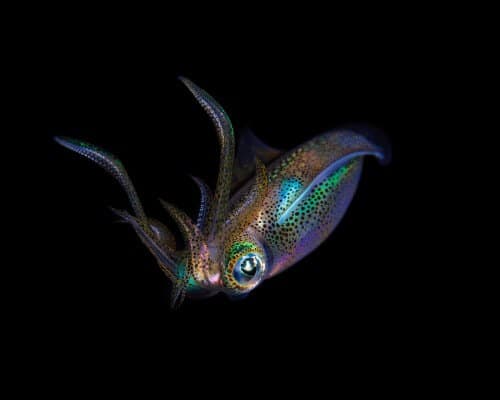A group of researchers from Rice University in collaboration with the University of Maryland decided to take on the challenge and engineer a material capable of doing just that. how? simple. They turned to nature's great camouflage experts - the squid series.

By: Adi Weiss
Is there a "perfect material" that can mask entire surfaces on request? Are we close to inventing the first invisible submarine?
A group of researchers from Rice University in collaboration with the University of Maryland, decided to take on the challenge and engineer a material capable of doing just that. how? simple. They turned to nature's great camouflage experts - the squid series.
The squid, as a mollusc belonging to the cephalopod (jet) class, is one of the invertebrates that have particularly elaborate structures - the eyes of squids and octopuses developed simultaneously and independently of the eyes of terrestrial vertebrates, and yet, they are almost as efficient. The squid and its relatives rely on a host of features to survive underwater, including impressive abilities of maneuvering and acceleration from zero speed, ink screens and even a venomous beak!
But all these together are no match for their super camouflage abilities. The cephalopods have opsin proteins in their skin similar to the ones we have in the eye. The skin itself is made up of an inner layer of chromatophoric cells (color cells in the primary colors), which produce color by expansion and eliminate it by contraction. The perfect synergy between them allows the squid to change the colors on the surface of its body within seconds according to the patterns of its environment. In the two-color league, compared to him, the chameleon will have to settle for a consolation prize.
Since 2010, Rice University has been working on groundbreaking materials, inspired by the head-feet department. The new technology uses a special arrangement of aluminum nanoparticles to create a rainbow of red, blue and green shades at the level of LCD screens. Compared to colored particles, these arrays do not fade with continuous exposure to light, and their color is sharp and clear. The researchers hope to perfect this technology to create materials that can "sense", through the scattering of light, the pattern of the environment and change their color in seconds into a copy of it. Such spectacular technology has many possible applications; Among others in the fields of architecture, military, medicine and others.
Explanatory video of the group of scientists studying squid skin in a biomimetic context
